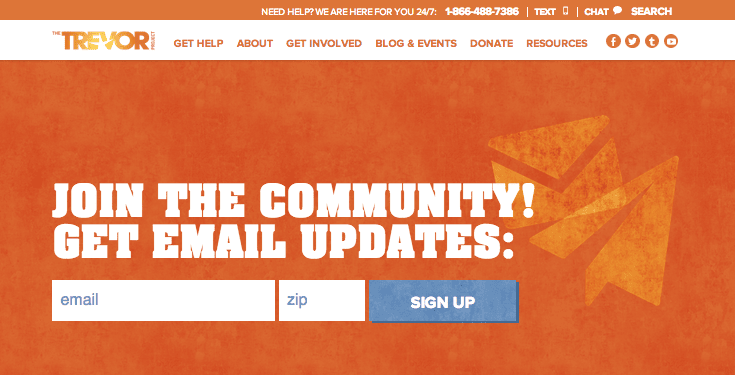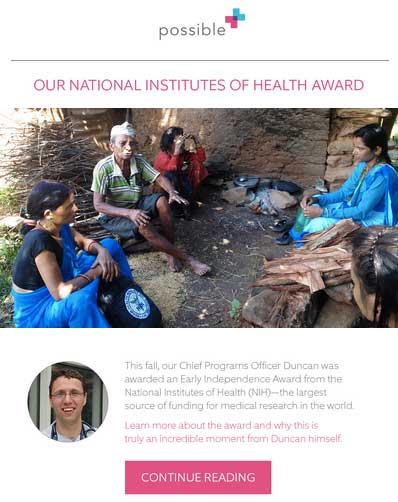Content Marketing 101 for Modern Nonprofits

While marketing is often talked about in the context of for-profits, it’s just as crucial in the nonprofit world. Nonprofit marketing promotes an organization’s message, increases brand awareness, and helps rally supporters around a cause.
One form of marketing that works well for nonprofits is content marketing. Unlike traditional marketing tactics like direct mail, TV ads, or telemarketing, which can be expensive, content marketing is a cost-effective form of marketing that uses compelling content to attract people to your organization.
Consider this:
• 92% of nonprofit professionals use content marketing, and 65% are creating more content than they were a year ago
• Inbound marketing delivers 54% more leads than traditional outbound marketing
• 86% of the most effective nonprofit marketers have someone overseeing a content marketing strategy
• 79% of nonprofits say fundraising is their content marketing’s top goal, followed by brand awareness and engagement
By creating and distributing shareable, valuable content through multiple channels, you can engage target audiences, accumulate website traffic, and build relationships that compel people to take action. All this, in turn, can help your organization increase its reach and boost fundraising efforts.
Here are some best practices to help build your content marketing strategy and grow your organization and its audience.
What You Should Think About When it Comes to Your…
Website
Acquire Emails: Email acquisition is key to growing your number of prospective donors (leads). There should be a distinct area on your homepage that captures emails. You want to maintain a conversation with anyone who lands on your site, so encourage visitors to subscribe to your email updates, newsletters, or blog.
Scrolling down the Trevor Project homepage, for instance, reveals a clear space where visitors can subscribe to regular updates.

Blog
Keep your blog updated with fresh content: A stale blog with outdated info can directly affect your organization’s number of supporters. Not only will new content help search engines find your website, but frequent, valuable, and informative blog updates can attract supporters back to your site and landing pages on a regular basis, build deeper connections with supporters, and compel them to take further action on behalf of your mission, such as making a donation.
It’s a good idea to include calls to action to donate or fundraise at the bottom of your blog posts. You can also include social share buttons and tweetable quotes within the post to extend your reach.
Use Segmentation: If you want to retain donors, and grow their lifetime value year over year, focus on building relationships. A donor’s connection with your organization is built on effective and ongoing communication.
This is why segmentation is every marketer’s best friend. Not everyone has the same connection to your nonprofit, so you want to create different email lists for separate groups of supporters. This enables you to deliver the right messages to the right people, allowing you to deepen their personal relationships with your organization and grow their levels of support.
Here are a few ways to segment your emails:
• Volunteers
• Blog subscribers
• Donation frequency (make sure to create a separate list for recurring donors)
• Donation amount (consider separating tiers of donors, e.g. low-range, mid-range, and high-range givers)
• Campaigns they’ve donated to (speak to their particular interests)
• Acquisition channel (third-party donors would need a more targeted approach than those who respond to a direct appeal)
Include a Next Step: Like an ongoing conversation, your emails should always indicate the next step you want readers to take. Whether you want them to watch a video or head over to your blog, include a call to action that engages them beyond simply reading your email.
Here, Possible Health’s email update gives a short teaser update, and then includes a call to action that directs readers to their blog for the full story. This is a great way to lead supporters back to your website, where they can opt to donate or fundraise on behalf of your organization.

Tip: Work with your development department to define any spaces in your emails that might include fundraising engagement opportunities, such as calls to “donate,” “become a monthly donor,” or “join us at this event.”
Newsletters
Send a regular newsletter: As your mainstay communication channel, your newsletter can be a valuable vehicle for growth that draws people back to your website and attracts potential donors or fundraisers throughout the year.
Here are some tips to make your newsletter more effective:
• Determine its frequency (and stick to it) – Once you decide how often you’ll send your newsletter, stick to your schedule. Supporters will notice if they don’t receive an expected delivery.
• Include social share buttons – Let people know how else they can get involved by clearly linking your social media accounts, blog, and website.
• Send a personalized email after sign-up – Rather than sending the typical auto-email, start off on the right foot by sending a personalized email after they sign up. This will immediately set you apart from other organizations.
• Keep the newsletter its own – During major campaigns, remember to keep your newsletter schedule consistent, and tease out your campaign within the newsletter. Fight the urge to turn the whole thing into a direct campaign appeal.
Social Media
Focus on Visual Storytelling: Visual content is the key to social media engagement. One study found that photos on Facebook get 53 percent more likes, 104 percent more comments, and 84 percent more click-throughs than the average post. The “average” post included text and link posts.
The power of visual storytelling lies in its ability to create emotional connections with viewers, which can in turn compel them to support your cause.
Some ideas for visual content forms include:
• Infographics about your fieldwork or mission
• Photos or videos of beneficiaries impacted by your programs
• Vlogs from staff members
• A behind-the-scenes look into your office and its culture
A simple photo can immediately bring people face-to-face with your work, its heart, and its impact.
Keep Up the Conversation: A strong relationship involves two-way communication. Engage followers on social channels by replying and responding to their messages. Shine the public spotlight on your supporters by sharing and retweeting their messages too. You’d be surprised how much these small details can really boost supporters’ loyalty and their perceptions of your brand.
buildOn often expresses appreciation for their supporters by retweeting them.
RT @mmirzoian @buildOn students inspire me everyday & on #GivingTuesday I choose 2 honor them w/ my gift! #unselfie pic.twitter.com/cnVWJdqAgD
— buildOn (@buildOn) December 2, 2014
Learn More: There’s a lot to cover when it comes to social media, so we’ve compiled a free guide that dives into how you can engage followers and grow supporters on each major social channel. Check it out here.
Major Takeaways:
To sum up, here are several key things to remember when it comes to your nonprofit’s content marketing strategy:
• Take advantage of your website traffic and use your homepage to capture emails
• Update your blog consistently to create a steady flow of traffic to your website and landing pages
• Segment your email lists to create targeted, meaningful messages for different pools of supporters that set your organization apart
• Include calls to action in your emails to keep readers engaged, whether they lead people to your blog or donation checkout pages
• Stick to a diligent newsletter schedule to keep your organization, its mission, and its need for support top of mind throughout the year
• Use visual storytelling in your email and social media channels to create emotional connections and compel supporters to take further action
Content marketing can be a powerful tool for your nonprofit. It plays a huge role in building lasting relationships with current supporters, and it drives your organization’s ability to reach new donors and fundraisers. With these best practices in hand, you’ll be well on your way to taking your nonprofit’s growth to new heights.




